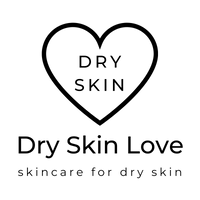
Dehydrated skin is skin that is lacking water and water-holding substances, called humectants.
This article will discuss:
- What is dehydrated skin?
- Normal skin hydration
- Water and skin cell turnover
- Natural moisturizing factors (NMFs)
- Summary
- References
What is dehydrated skin?
Dehydrated skin is skin that is lacking water and water-holding substances, called humectants.
Dehydrated skin appears dry, rough, and may scale and flake. It may also show premature signs of aging, like surface wrinkles and loss of elasticity.
Dehydrated skin can happen to anyone, regardless of skin type — if you have dry, oily or combination skin, you can still experience dehydration.
Normal skin hydration
Water is essential for the normal functioning of the skin.
The water content of skin is remarkably high - the epidermis (the outer skin layer) contains more than 70% water, while its outermost layer, the stratum corneum has been shown to contain ~15 - 25% water (Warner et al, 1988; Caspers et al, 2001; Caspers et al, 2003).
- it maintains plasticity of the skin, protecting it from damage
- it contributes to optimum stratum corneum barrier function
- it allows hydrolytic enzymes to function in the process of desquamation
- Natural moisturizing factors (NMFs) and other humectants (such as glycerol and hyaluronic acid) to attract and hold onto moisture
- Intercellular lipids (fats) that form a barrier to prevent transepidermal water loss (TEWL) (Verdier-Sévrain et al, 2007).
Water and skin cell turnover
Daily insults from the environment, such as low humidity, surfactants, wind, and sun, can lower the skin's water content, causing improper desquamation and the appearance of dry, flaky skin (Verdier-Sévrain et al, 2007).
Desquamation is the natural process of shedding skin cells.
New skin cells are formed at the base layer of the skin, and they differentiate and migrate towards the skin surface, in a process that takes approximately 4 weeks. Nearly a billion cells are lost each day from the surface of adult skin (Milstone et al, 2004).
One of the critical functions of water in the skin is to participate in hydrolytic enzymatic processes required for normal desquamation.
In other words - water is necessary for the enzymes to function properly.
If the skin water content falls below a critical level, the enzymatic function required for normal desquamation is impaired, leading to skin cells sticking and building up on the skin surface (Verdier-Sévrain et al, 2007).
These changes lead to the visible appearance of dryness, roughness, scaling, and flaking (Verdier-Sévrain et al, 2007).
Natural moisturizing factors (NMFs)
The role of the natural moisturizing factors is to maintain adequate skin hydration.
Our outer skin layer is called the stratum corneum and it is made up of cells called corneocytes, which form the physical barrier of the skin.
Corneocytes are filled with keratin filaments as well as amino acids and other small molecules, collectively referred to as natural moisturizing factors (NMF), derived from the breakdown of filaggrin, a protein that surrounds the keratin filaments (Verdier-Sévrain et al, 2007).
Natural moisturizing factors are a mix of humectants or hydroscopic molecules that help attract and hold onto water and maintain hydration in the skin.
Natural moisturizing factors include amino acids and their derivatives (pyrrolidone carboxylic acid and urocanic acid) made from the breakdown of epidermal filaggrin. Other components found within but also external to the corneocytes include lactates, urea, and electrolytes (Table 1).

Hyaluronic Acid
Hyaluronic acid is well known as one of the major components of the dermis, and is highly hygroscopic, meaning it can absorb moisture from the air.
Hyaluronic acid provides hydration and structural integrity to the dermis (Verdier-Sévrain et al, 2007).
Glycerol
Glycerol is also known as glycerin.
Interestingly, it has been shown that glycerol is made by our skin in the pilosebaceous unit and transported through aquaporin-3 (AQP3) channels to the skin.
Summary
Dehydrated skin is skin that is lacking water and water-holding substances, called humectants.
-
Skin appears dull, loss of elasticity and fine lines are more pronounced.
-
Dehydrated skin is a condition that anyone can experience.
-
Caused by a lack of moisture in the stratum corneum, which is the top layer of the skin
References
Warner RR, Myers MC, Taylor DA. Electron probe analysis of human skin: determination of the water concentration profile. J Invest Dermatol 1988; 90: 218–24.
Caspers PJ, Lucassen GW, Carter EA et al. In vivo confocal Raman microspectroscopy of the skin: noninvasive determination of molecular concentration profiles. J Invest Dermatol 2001; 116:434– 42.
Caspers PJ, Lucassen GW, Puppels GJ. Combined in vivo confocal Raman spectroscopy and confocal microscopy of human skin. Biophys J 2003 July; 85: 572-80.
Fowler J. Understanding the Role of Natural Moisturizing Factor in Skin Hydration. Practical Dermatology. 2012; July. 36-40.
Rycroft RJ. Low humidity and microtrauma. Am J Ind Med 1985; 8:371–3.
Verdier-Sévrain S, Bonté F. Skin hydration: a review on its molecular mechanisms. J Cosmet Dermatol. 2007 Jun;6(2):75-82.
Milstone LM. Epidermal desquamation. J Dermatol Sci. 2004 Dec;36(3):131-40.
Fluhr JW, Darlenski R, Surber C. Glycerol and the skin: holistic approach to its origin and functions. Br J Dermatol. 2008.
Author Information

Dr. Natasha Ryz is a scientist, skin care expert and an entrepreneur. She is the founder of Dry Skin Love Skincare, and she creates skincare products for beauty, dry skin and pain relief.
Dr. Ryz has a PhD in Experimental Medicine from the University of British Columbia in Vancouver, and she is a Vanier scholar. She also holds a Master of Science degree and a Bachelor of Science degree from the University of Manitoba in Winnipeg.
Natasha is the former Chief Science Officer of Zenabis Global, and she oversaw cannabis extraction, analytics, and product development. Her team brought 20 products to market including oils, sprays, vapes and softgels.
Why I Started A Skincare Company

